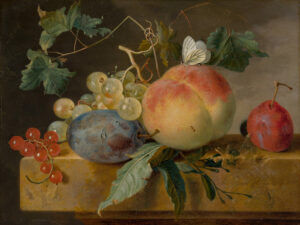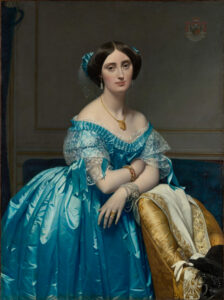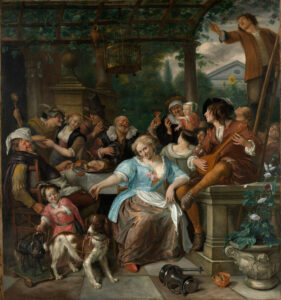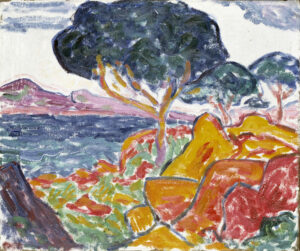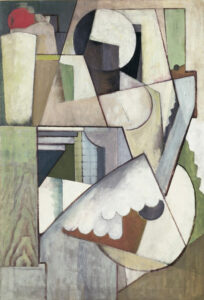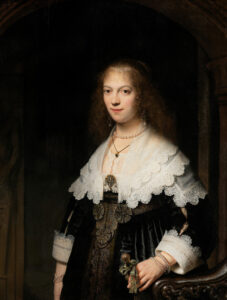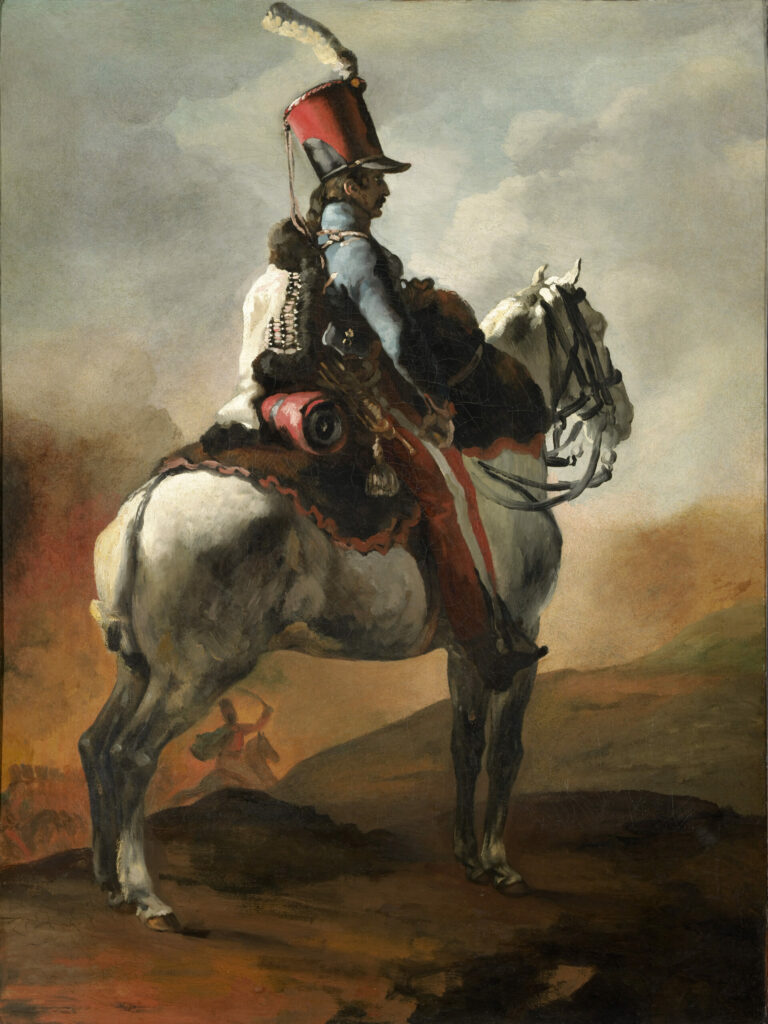
Géricault delivers far more than a simple equestrian portrait: a visual meditation on the destiny of post-Napoleonic France.
The hussar trumpeter stands out with dramatic power against a tormented sky, embodying military pride now tinged with bitterness. The hieratic silhouette of the rider, enhanced by the brilliant red of his shako and uniform ornaments, contrasts with the almost spectral whiteness of his mount. This chromatic tension amplifies the melancholic aura emanating from the composition.
The artist excels in his dynamic treatment of the white horse, all contained muscle. Light models the volumes and accentuates the expressiveness of this isolated figure. In the distance, reddish mists suggest the battle from which the trumpeter has withdrawn. Through rapid yet precise brushstrokes, Géricault captures this moment where the era’s entire ambivalence crystallizes: between glorification of military heroism and acute awareness of its futility against historical upheavals.
Essential Information
- The Hussar Trumpeter by Théodore Géricault, c. 1815-1820
- Oil on canvas, 37 13/16 × 28 1/4 in. (96 × 71.8 cm)
- The Clark Art Institute, Williamstown
- https://www.clarkart.edu/ArtPiece/Detail/Trumpeter-of-the-Hussars
Théodore Géricault (1791-1824), a blazing meteor of French Romanticism, revolutionized his era’s artistic landscape through the expressive power of his work. Trained in the studios of Carle Vernet and Pierre-Narcisse Guérin, he quickly freed himself from academic conventions to develop a pictorial language of striking modernity. His fascination with horses, which he studied with almost scientific passion, nourished his early compositions, whose technical virtuosity earned him early recognition.
Géricault found in painting a means to explore the shadows of the human condition, culminating in his monumental masterpiece, The Raft of the Medusa (1819). His premature death at age 32 cut short a brilliant career that had already left an indelible mark on the emergence of Romantic art.

